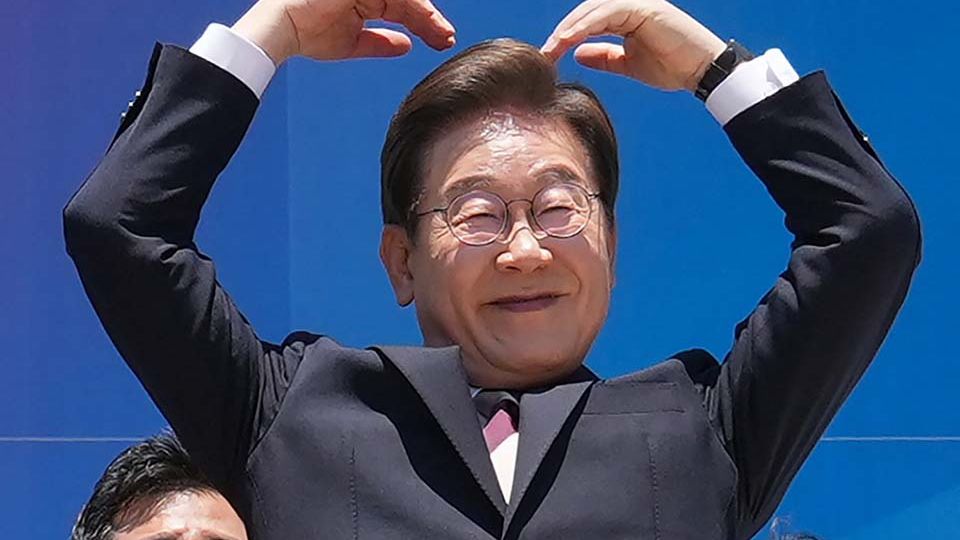June 13, 2025
SEOUL – President Lee Jae-myung, who took office on June 4, has been busy. He is working to resolve the six-month national crisis that left the country without a president because of the martial law declaration by former President Yoon Suk Yeol. It is also urgent for Lee to appoint high-ranking officials to help him run the government over the next five years. Though he is very busy right now, he might hope to see his administration succeed — in other words, to reestablish governance.
Since the democratization of the Republic of Korea in 1987, there have only been two successful cases where the government has been wholly rebuilt — specifically, the elections in 1992 and 2002. However, it is necessary to put aside the 1992 election of President Kim Young-sam, given that it resulted from a political trick — the merger of three major parties. On the other hand, the election of President Roh Moo-hyun in 2002 can be evaluated entirely as the result of public judgment. His election as president was mainly due to the public’s relatively positive evaluation of his predecessor, President Kim Dae Jung. The other presidents were all subject to public criticism but failed to lay the groundwork for a successful transfer of power to the opposition.
The newly launched Lee Jae-myung administration should closely examine the background of the Kim Dae-jung administration’s success and the causes of other governments’ failures. Three variables might be derived by analyzing the successes and failures. The first is the zeitgeist, or the spirit of the times; the second is communication and the third is unity. President Kim Dae-jung always tried to grasp the zeitgeist, and once it had been understood, he demonstrated his utmost efforts to bring it to fruition. Until the 1990s, he focused on the struggle for democratization and political development. In the 2000s, he raised national topics such as national unity, informatization and technology, inter-Korean reconciliation and cooperation.
What might be the zeitgeist President Lee is facing? The first priority is overcoming insurrection. Efforts should be made to heal the psychological wounds of the people, shocked by the insurrection, by establishing institutional arrangements to prevent it from occurring again. The second most important task is to proceed with national reconstruction, which Korea must elevate to the next level by reforming and improving policies the state completely reversed during the three years of the Yoon Suk Yeol government. To this end, we propose a new Korean-style national development model and a national reconstruction campaign.
To upgrade our democracy, it is necessary to introduce additional systems that guarantee popular sovereignty and to march with the people toward a future in which national integration can take place naturally. In terms of the economy, we need a national campaign to become a creativity-oriented society in which diversity, inclusiveness and tolerance are respected and where people can try again after failure. It is true that governments other than the Kim Dae-jung administration acknowledged the spirit of the times. The problem is that their actions went in different or opposite directions.
The second task in succeeding as a government is effective communication. President Kim Dae-jung’s communication method was surprisingly simple. First, to understand what policies the people wanted, he referred to opinions expressed in newspapers and broadcasts as much as possible. The next step was to candidly explain to the public the background of his policies and seek support. Even if a policy did not get 100 percent support, a candid explanation helped lessen the degree of rejection by the people. While pursuing his policies as the next step, Kim admitted to errors when things went wrong and sought understanding by explaining what happened.
Listening to public opinion, explaining policies in advance and elucidating policy failures were key elements of Kim Dae-jung’s successful communication. Although these elements seem simple, they are not easy to implement. If officials in charge of state affairs neglect the people and focus only on the struggle for power, they will not achieve public acceptance because frank communication would mean political defeat. Ironically, this is a key factor that led to the success of the Kim Dae-jung administration and the failure of other governments.
The last of the three successful elements of the Kim Dae-jung government is that it made every effort to unify the people. National unity is also easy to talk about but challenging to achieve. This is because “the people” are ultimately the voters who support a leader in today’s situation of severe political polarization. In a sense, voters who do not support the winner of an election might not count as citizens. Kim never discriminated against the people who did not support him, which was one of the great secrets to his success.
For President Lee Jae-myung, achieving national unity will be more difficult than it was for President Kim because political polarization has become so extreme. Nevertheless, if President Lee repeatedly reaches out to and embraces the conservatives who oppose, fear and despise him, antipathy toward him will undoubtedly lessen. Then, the energy he would have spent attacking the opposition can be put into developing the policies that the majority of people want. In that scenario, there would be no reason for him not to succeed.
The Lee Jae-myung administration has a much greater chance of success than its predecessors. This is because most of the negative images of President Lee are simply illusions. Within the next three months or so, it is certain that the baseless slanders against him will disappear. However, improving Lee Jae-myung’s image does not guarantee success. The administration must work hard to grasp the zeitgeist, communicate strategically and achieve national unity as the great Kim Dae-jung did. These may well be sufficient conditions for success.
Wang Son-taek is an adjunct professor at Sogang University. He is a former diplomatic correspondent at YTN and a former research associate at Yeosijae. The views expressed here are the writer’s own. — Ed.


